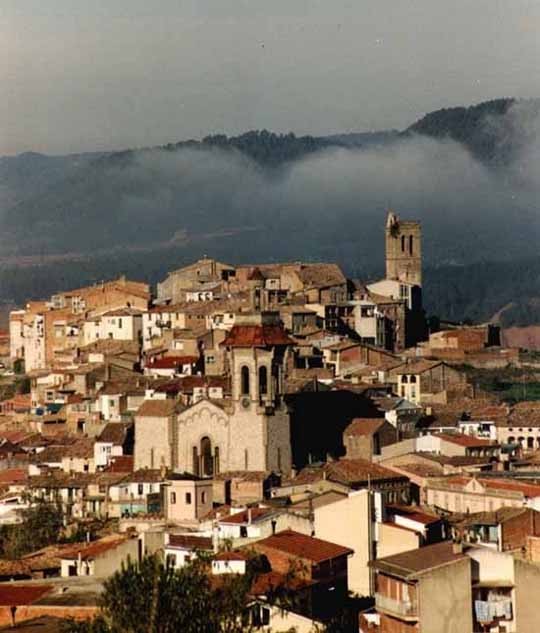Artés on:
[Wikipedia]
[Google]
[Amazon]
Artés is a Spanish town in the

Official website
Government data pages
{{DEFAULTSORT:Artes Municipalities in Bages Populated places in Bages
province of Barcelona
Barcelona (, ) is a province of eastern Spain, in the center of the autonomous community of Catalonia. The province is bordered by the provinces of Tarragona, Lleida, and Girona, and by the Mediterranean Sea. Its area is .
, Bages comarca (county), in Catalonia
Catalonia (; ca, Catalunya ; Aranese Occitan: ''Catalonha'' ; es, Cataluña ) is an autonomous community of Spain, designated as a '' nationality'' by its Statute of Autonomy.
Most of the territory (except the Val d'Aran) lies on the no ...
.
Location
The town of Artés is located at the center ofCatalonia
Catalonia (; ca, Catalunya ; Aranese Occitan: ''Catalonha'' ; es, Cataluña ) is an autonomous community of Spain, designated as a '' nationality'' by its Statute of Autonomy.
Most of the territory (except the Val d'Aran) lies on the no ...
, at the eastern edge of the plain zone of Bages -commonly known as Pla de Bages
Pla de Bages is a Spanish Denominación de Origen Protegida (DOP) (''Denominació d'Origen Protegida'' in Catalan) for Catalan wines, located in the province of Barcelona ( Catalonia, Spain), and is one of the smallest DOPs in Spain, coveri ...
. The town is in the basin of the Gavarresa river and of its affluent, the stream of Malrubí.
It is bordered on the North by the towns of Sallent
Sallent () is a municipality in the comarca of Bages, Province of Barcelona, in the Autonomous Community of Catalonia, Spain. The river Llobregat
The Llobregat () is the second longest river in Catalonia, Spain, after the Ter. It flows i ...
and Avinyó, in the South by Calders and it shares a small border in the West with Navarcles, on the limit of the Llobregat
The Llobregat () is the second longest river in Catalonia, Spain, after the Ter. It flows into the Mediterranean south of the city of Barcelona. Its name could have originated in an ancient Latin word meaning 'dark', 'sorrowful' or 'muddy', or ...
river.
The town is near the Artés Formation, a unique geological formation that owes its name to its proximity with the town.
History
The name of Artés is believed to derive from theLatin
Latin (, or , ) is a classical language belonging to the Italic languages, Italic branch of the Indo-European languages. Latin was originally a dialect spoken in the lower Tiber area (then known as Latium) around present-day Rome, but through ...
word '' Artium '', which means "fortified hill". This is based on the evidence of the existence of a 6th-century fortified church on the top of the hill of Artés, where the first settlers began to expand the village into the valley.
Little evidence of the Prehistory
Prehistory, also known as pre-literary history, is the period of human history between the use of the first stone tools by hominins 3.3 million years ago and the beginning of recorded history with the invention of writing systems. The us ...
of Artés has been discovered to date. However, a document from the year 938 indicates the presence of three dolmens; and abundant samples of Iberian pottery have been found in the valley of Salabernada.
The archeological remains of the Classical Period are numerous and confirm the existence of continuous settlement for seven centuries. In particular, archeological finds have been made at Matacans, where there used to be a Roman
Roman or Romans most often refers to:
* Rome, the capital city of Italy
* Ancient Rome, Roman civilization from 8th century BC to 5th century AD
*Roman people, the people of ancient Rome
*''Epistle to the Romans'', shortened to ''Romans'', a lett ...
villa, and at the Plaça Vella (''Old Square'') where three Roman inscriptions of the 2nd and 3rd centuries, one necropolis
A necropolis (plural necropolises, necropoles, necropoleis, necropoli) is a large, designed cemetery with elaborate tomb monuments. The name stems from the Ancient Greek ''nekropolis'', literally meaning "city of the dead".
The term usually im ...
and an ancient Paleochristian Church -that can be dated between 6th and 7th centuries- were found.
The name of Artés is one of the first documented names of all the towns in Bages. Specifically, a grant dated on 24 June 889, by which the King Odó gave to the Church of Sant Pere de Vic several goods and rights; among them de Valley of Artés.
Economy
At present, the most important activity of the town is industry, which counts on some important multinational companies established in the town. In 1973 the Industrial Zone of Santa Maria d'Artés was opened and in 1991 an important enlargement of it was made, even though it is now reaching its limit of usable ground. On the other hand, Artés is well known for its production ofwine
Wine is an alcoholic drink typically made from Fermentation in winemaking, fermented grapes. Yeast in winemaking, Yeast consumes the sugar in the grapes and converts it to ethanol and carbon dioxide, releasing heat in the process. Different ...
and cava. In 1996, together with other towns of the surrounding area, Artés achieved the Denomination of Origin Pla de Bages for its wines and, at the same time, it celebrated the tenth birthday of the denomination of the Cava of Artés.

References
External links
Official website
Government data pages
{{DEFAULTSORT:Artes Municipalities in Bages Populated places in Bages